U.S. Army History
In the Okinawa Prefectural Archives
By Shannon Granville
Article published on: June 1, 2024 in the Army History Summer 2024 issue
Read Time: < 5 mins
The U.S. Army has a relatively small physical presence in Japan today, but it has an extensive historical record spanning more than half a century of transition from wartime enmity to peacetime alliance and cooperation. The relevant documentary evidence for the Army’s activities in the Pacific are available through various U.S. repositories such as the National Archives and the Army Heritage and Education Center. However, researchers interested in the history of the Army in the Pacific have another resource for a number of unique historical materials: the Okinawa Prefectural Archives.
The U.S. Army in Okinawa
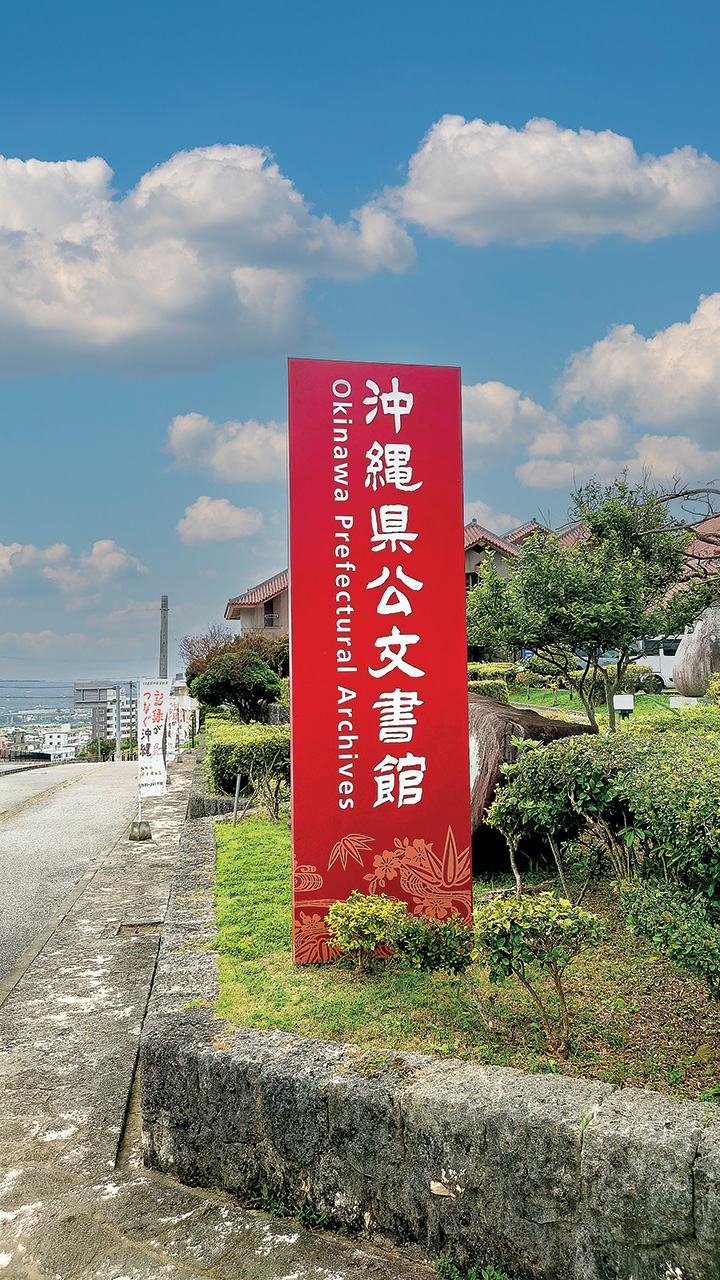
Located in the town of Haebaru, the Okinawa Prefectural Archives incorporates traditional Ryukyuan architectural features in a concrete-based structure designed to withstand the island’s frequent typhoons, as well as other natural disasters.
The closing months of World War II in the Pacific Theater saw brutal fighting in the islands nearest to Japan, primarily in the Ryukyu Islands southwest of the Japanese mainland. Operation Iceberg, the invasion of the main Ryukyu island of Okinawa, involved nearly three months of fierce, bloody combat against deeply entrenched Japanese defenses. Contemporary estimates state that almost 250,000 people, including close to 100,000 Okinawan civilians, lost their lives during the invasion.1 Following the Japanese surrender in September 1945, the Army remained on Okinawa in several different capacities. During the postwar occupation period, the U.S. Military Government of the Ryukyu Islands administered Okinawa from 1945 until 1950. Yet even after the Treaty of San Francisco restored sovereignty to Japan in April 1952, the Ryukyu Islands remained under de facto U.S. military control and administration for two decades through the U.S. Civil Administration of the Ryukyu Islands (USCAR).
In the ensuing years, Okinawa was a key strategic location for the U.S. Army. It provided a vital logistical and staging platform for U.S. engagement in the conflicts in Korea and Vietnam, as well as an overall base of operations for Army forces in the Pacific, first through Ryukyus Command and then U.S. Army, Ryukyu Islands.
A succession of Army general officers served as the most senior governing officials in the Ryukyus for both military and civilian authorities.The Okinawan people had a parallel governing body known as the Government of the Ryukyu Islands (GRI), but USCAR effectively had veto over all government decisions in Okinawa.Even after Okinawa reverted to Japan in 1972, the legacy of the Army’s presence in the islands has continued to shape the U.S.-Japan relationship, as well as the political and cultural dynamics between Okinawa and the rest of Japan.
U.S. Army Records in the Okinawa Prefectural Archives
The Okinawa Prefectural Archives is a critical source for materials on the history of Okinawa and the Ryukyu Islands as a whole. In the final months of World War II, intensive shelling and the wholesale devastation of the war destroyed many of Okinawa’s prewar records. For this reason, the archives staff has a strong sense of the importance of conservation and preservation in safeguarding local history and Ryukyuan cultural identity. Okinawans often visit the prefectural archives to research local and family history, particularly as the perspectives of those with firsthand knowledge of the war years have faded from living memory.
The main researcher entrance. The exhibit hall is located on the first floor, and the main reading room is on the second floor.
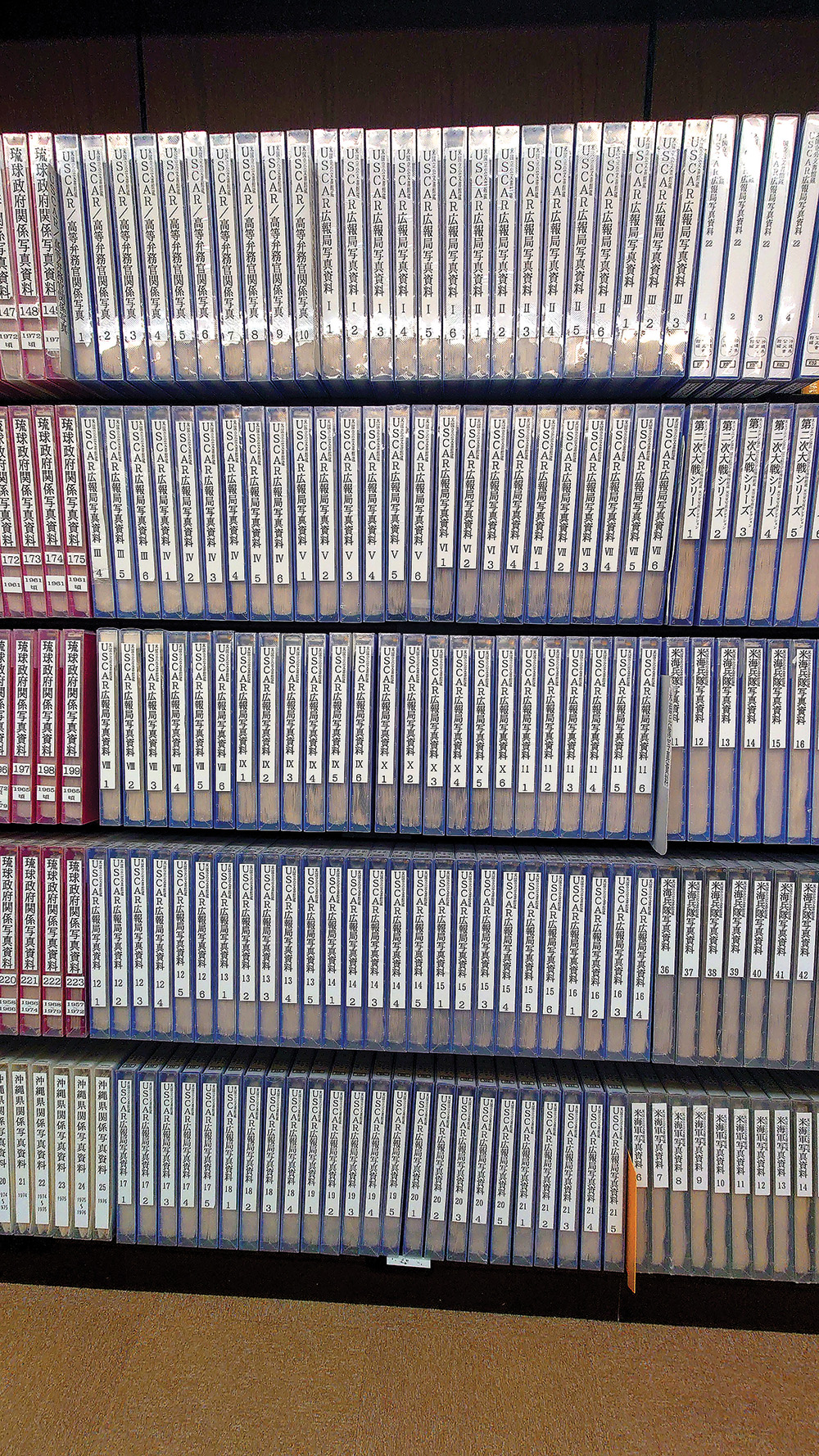
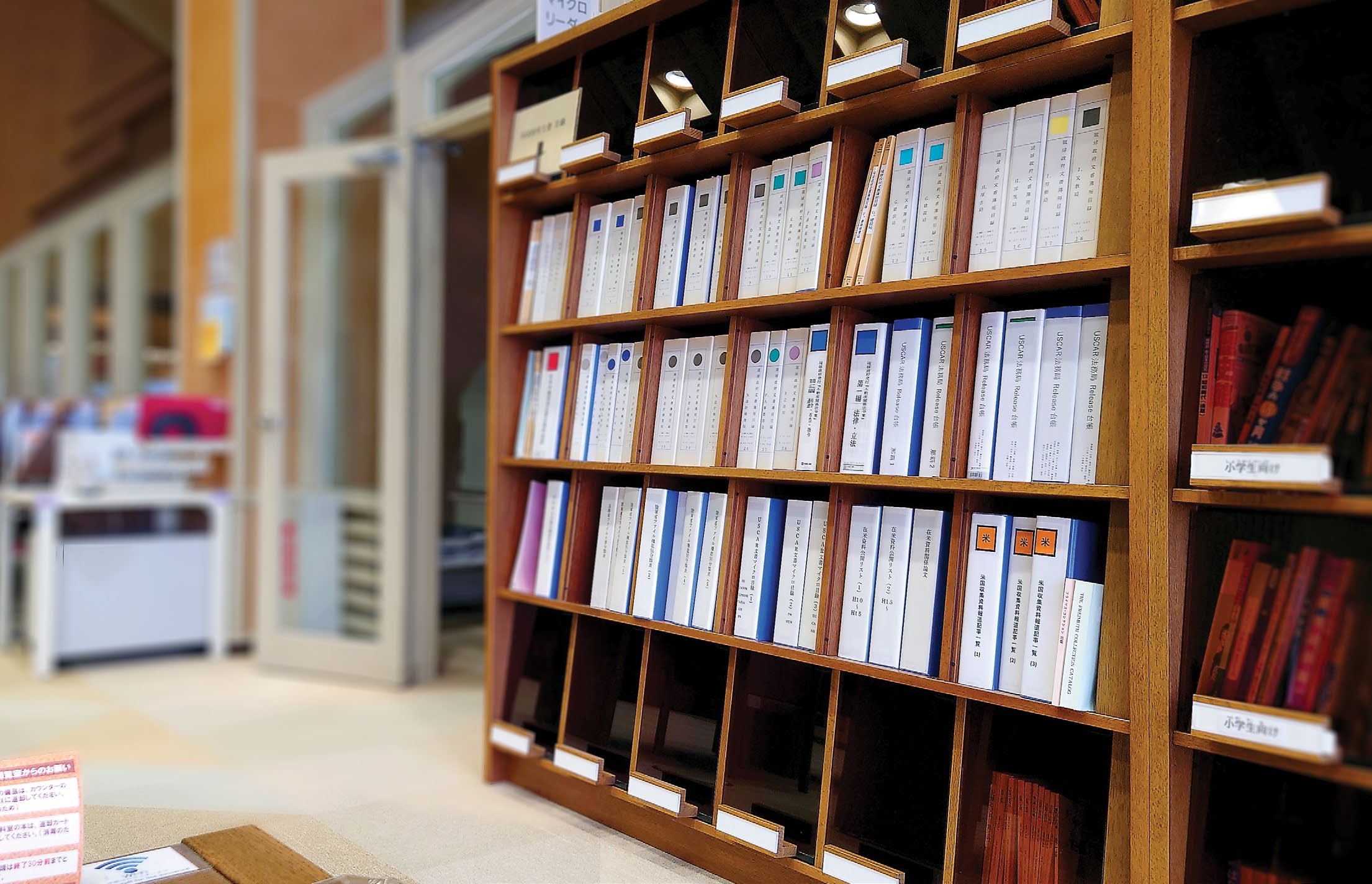
Open shelves in the main reading room allow researchers to access information on the archives’ microfilm holdings and personal document collections.
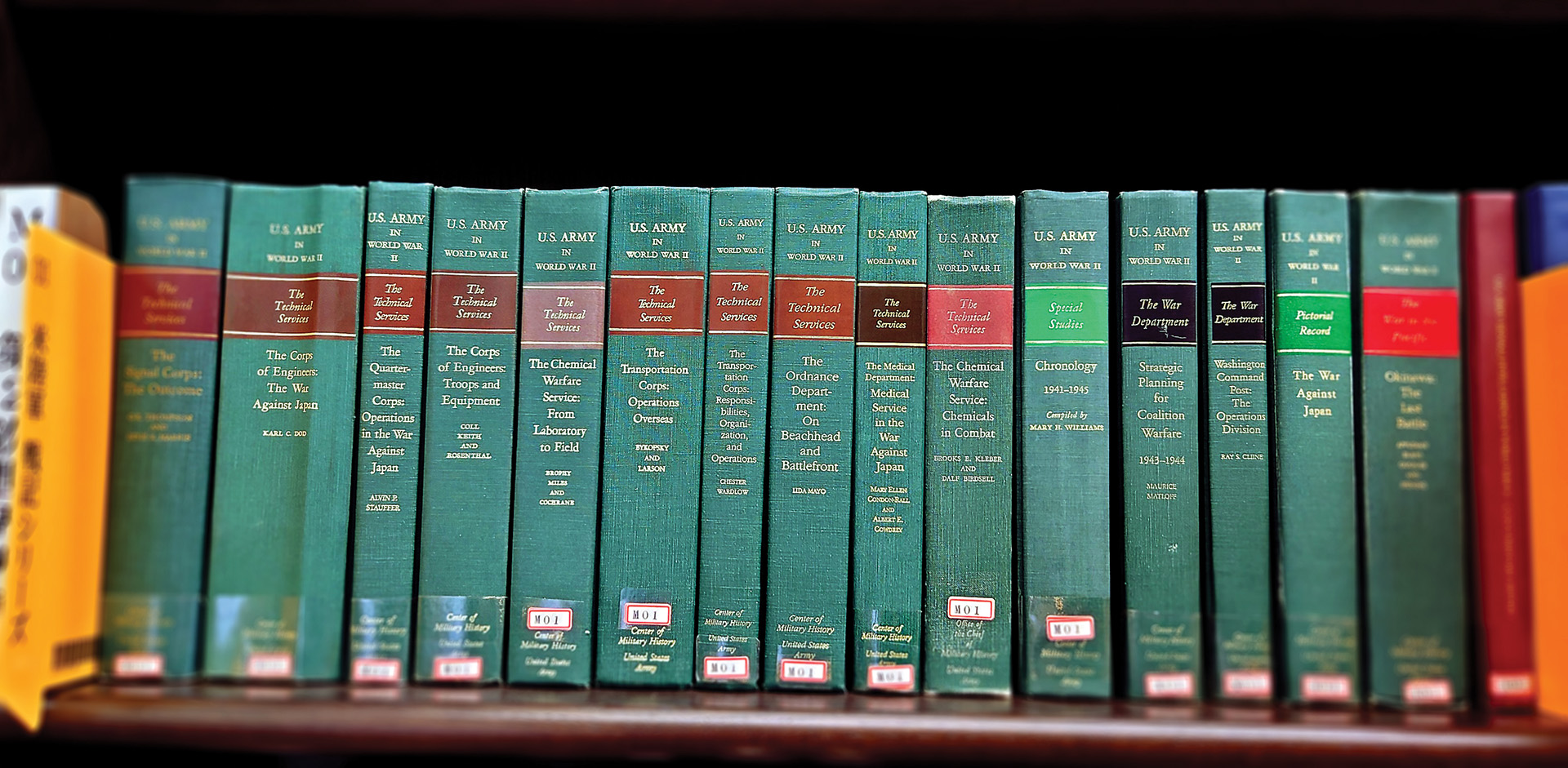
Several relevant volumes of CMH’s United States Army in World War II series, as seen on the archives’ open shelves.
A glance through the Okinawa archives’ searchable online database reveals the depth of the Army-related collections. Wartime and postwar documents can be viewed on microfilm copies of U.S. records also available through the National Archives at College Park, Maryland, including Record Groups 331 (Records of Allied Operational and Occupation Headquarters, World War II) and 260.12 (Records of the U.S. Civil Administration of the Ryukyu Islands (USCAR), 1945–1972). Digitized photographic and film records from the military government and USCAR periods provide a wealth of insight into day-to-day life in Okinawa, particularly regarding civil-military relations. Okinawan government records, from the GRI to the postreversion prefectural assembly and local government bodies, also offer glimpses into the islands’ relationships with both Washington and Tokyo.
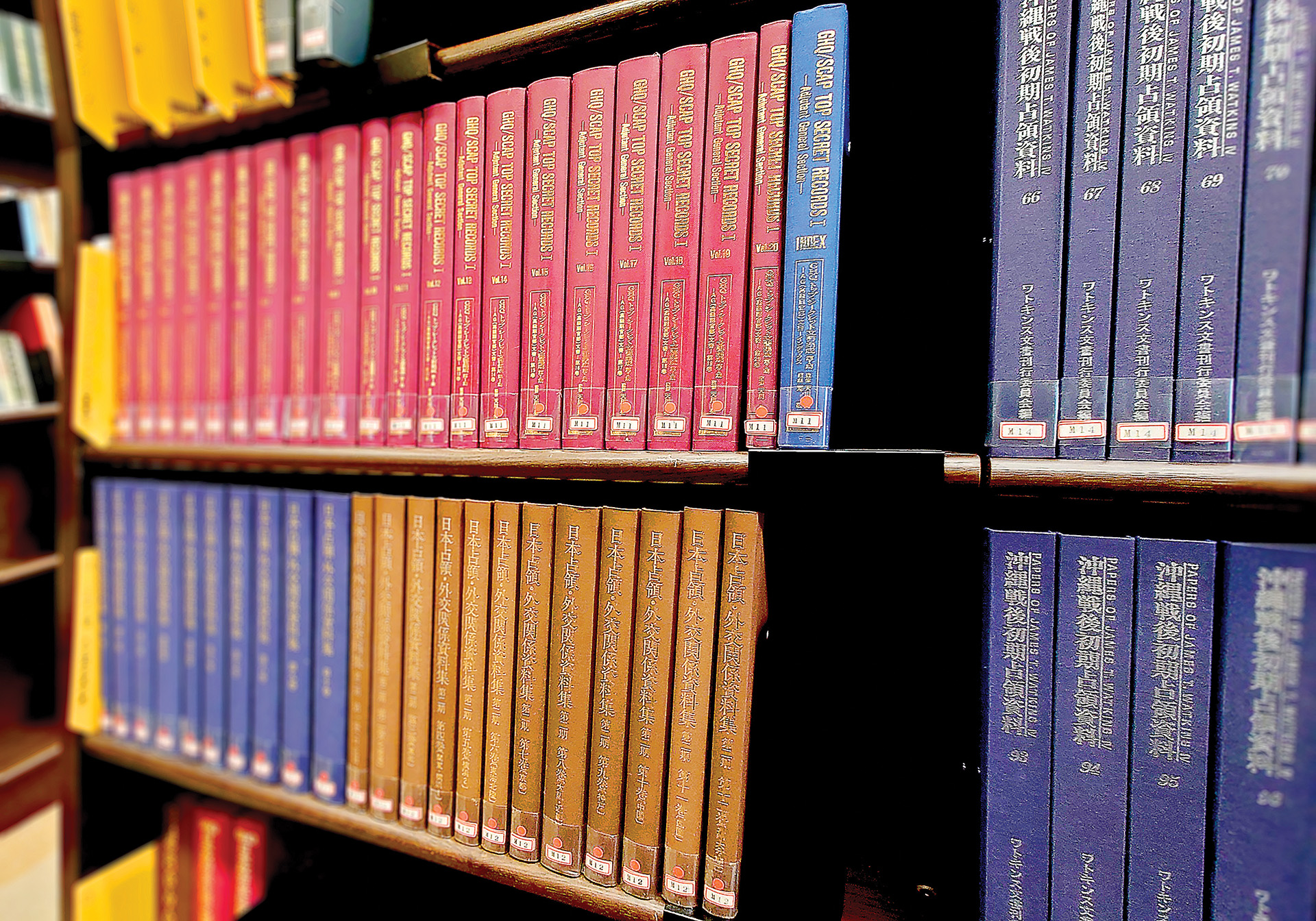
Document volumes available for reference in the archives’ open stacks include the records of the U.S. occupation government and related diplomatic materials. The collected papers of James T. Watkins IV, seen in blue at the far right, are a notable archival source for information on the U.S. Navy’s civil affairs program in occupied Okinawa in 1945–1946.
Beyond official government materials, the archives hold several personal papers collections from individuals with strong ties to Okinawa’s history. One of the major personal holdings is the papers of George H. Kerr (1911–1992), a U.S. diplomat and academic who received a commission from USCAR to write a scholarly history of the Ryukyu Islands. Other notable collections related to U.S. Army history include those of Edward O. Freimuth (1919–2001), a key USCAR staff member whose papers contain useful materials on postwar Okinawan history and culture; and Raymond Yoshihiro Aka (1915–2006), a Japanese American soldier from Hawai'i who was a member of the Military Intelligence Service during World War II and a Department of the Army civilian in the postwar period.
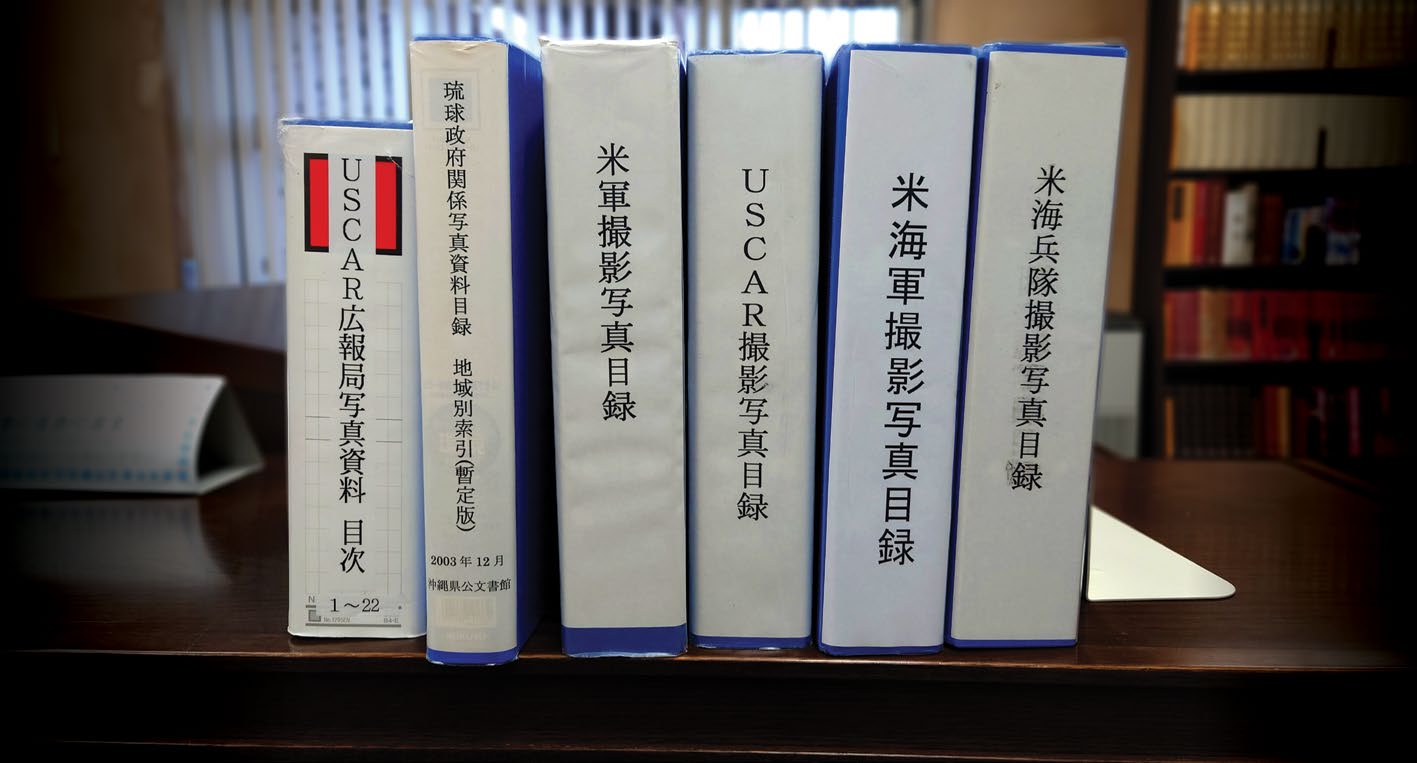
Available Army-related materials seen here include U.S. Army and USCAR photograph reference files.
Even though the U.S. Army is no longer a driving force in Okinawa’s political and cultural life, the people of Okinawa have dedicated significant public resources to preserving its historical records. The Okinawa Prefectural Archives has much to offer to those who are looking for a broader understanding of the Army’s experiences in the Pacific.

Among the documents on display in the archives’ main exhibit hall is a bilingual safety procedures manual used in Operation Red Hat, the removal of U.S. chemical weapons from Okinawa in 1971.
Access Information
The Okinawa Prefectural Archives is in the town of Haebaru on the main island of Okinawa, southeast of the prefectural capital of Naha. From central Naha, it can be reached by car in about 25 minutes, or by local bus and a short walk in about 45 minutes. The main reading room and exhibit hall are open Tuesday through Sunday from 0900 to 1700 and closed on Mondays and on Japanese public holidays. Researchers interested in requesting materials should contact the archives in advance of their visit through the main website at https://www.archives. pref.okinawa.jp. English-speaking staff are available for assistance, but researchers will benefit from having some knowledge of Japanese to aid in their review of materials.
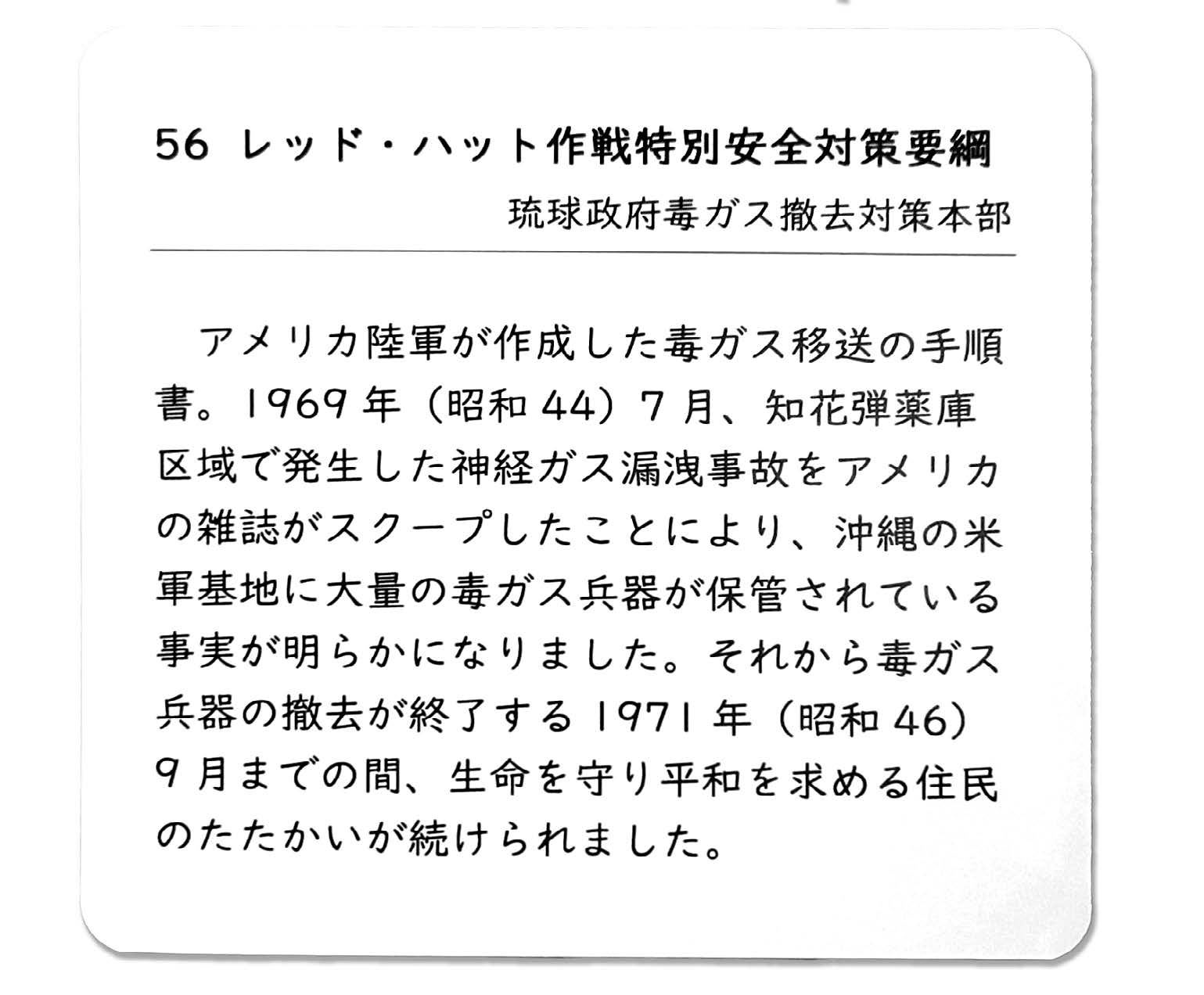
The text of the information placard, introducing the exhibit as “A procedure manual prepared by the U.S. Army on the transportation of poison gas.”
Author
Shannon Granville is the senior editor in the Multimedia and Publications Division at the U.S. Army Center of Military History. As a member of the twenty-sixth class of Mansfield Fellows (2022–2023), she spent a year working with Japanese government counterparts to study the use and teaching of military history in Japan. She thanks the Okinawa Prefectural Archives for their work to preserve the history of the U.S. Army in Okinawa.
Notes
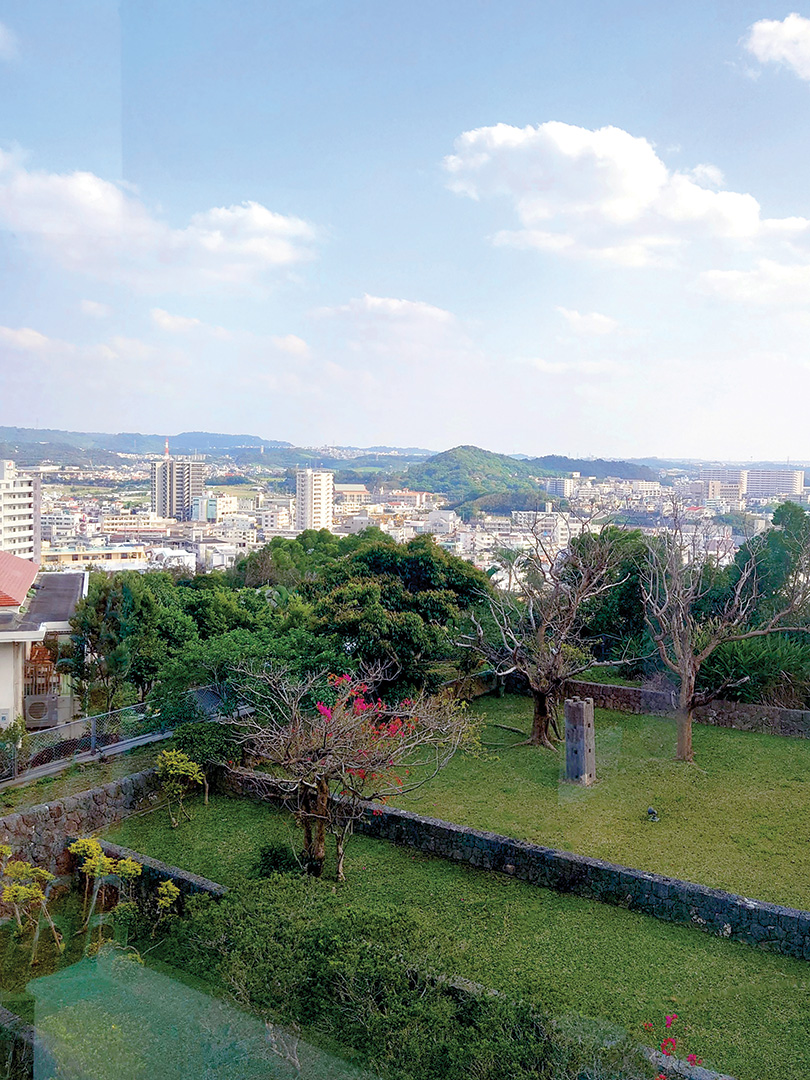
Tall glass windows in the main reading room offer a view over the hills of Haebaru.